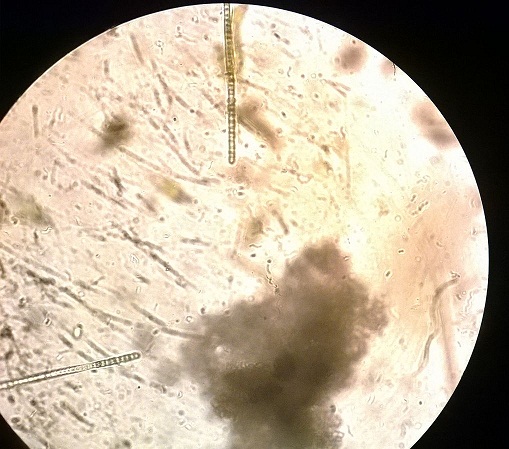In the following photos can be seen a thread-like (almost like longkou vermicelli) things. At first I was convinced that it was cyanobacteria, however a classmate said it look more like a little worm, and other person said it look like it was probably nothing (nor prokaryote nor worm). I can't find a way to settle what it is, how can I know?
Zoom 40x
EDIT:
Could the first one be lyngbya? I found this website and the second to last picture kind of looks like what it is in my picture:
And also could my second picture depict nostoc bacteria?



